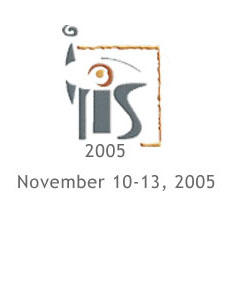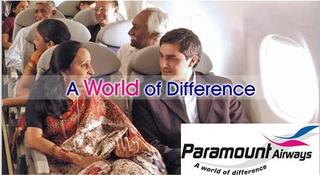The
Express India article confirmed the erstwhile unconfirmed reports that the next IIM would be in the North East.
The confirmation comes as a real surprise since it is kind of unbelievable that such a remote place would be the best available place for an institution like the IIM, when globally established cities like Hyderabad, Pune, Chandigarh etc have neither an IIM nor an IIT.
The report says that Meghalaya beats Assam in getting the IIM, which gives a feeling that a lot of political pressure has went behind such a decision. One of the frequent arguments regarding the decision is to achieve ‘national balance’ and to ‘develop North East’, which, on the face of it, sounds downright ridiculous.
How would an IIM help achieving national balance? I would agree to the fact that an ideal institution would help in development of the area, but it’s always two ways. For example, we suspect that the main idea behind setting up an IIM at Indore is to help the SEZ near Indore, despite the fact that Indore is pretty badly connected to most parts of the country. This seems to be an okayish decision since we do interact a lot with the companies in the SEZ region. But then, there are a lot of things where big cities always score over.
Plus, it’s a known fact that students who come into IIMs are mostly from metros and big cities all over the country, and would love to settle in those kinds of places again. This again is the sentiment
felt by corporates who feel students from IIMs are not 'made for rough and tough rural kind of work'.
The problems I see:1)
Inaccessibility: How would students commute to such a place? Not everyone could afford an air ticket all the time. What would students do in the free time? As far as my experience goes, the student profile would be more than happy to have the regular 'chillouts' such as parties, pubs, outings, cafes, good restaurants etc. What would students do to commute home during holidays? We get something like 7 days once every 4 months!
2)
Industry: What would students do for interacting with the industry through projects, consultancy etc? And guest lectures?
3)
Faculty: Why would top-notch faculty want to stay permanently in such places? They would definitely be more worried about the education of their kids, exposure etc. And pulling in visiting faculty is a very tough and costly affair.
4)
Placements: I’ve heard that even age-old and established institutions frequently commute to nearby metros for interacting with corporates, particularly if air connectivity is an issue.
5)
Foriegn exchange: All the IIMs have foriegn students coming from top notch international B-schools. For them again, places like Bangalore etc would definitely be more preferable due to their cosmopolitan nature.
Taking more practical examples, one of the foremost reasons why IIM-B is considered better my many when compared to IIM-C despite having started late is because of the software industry backing it has, and the fact that Bangalore is one of the most happening destinations in the world, let alone India. Considering this,
such a decision would perpetually put an IIM behind some of the non-IIMs, which would be damage to the ‘IIM’ brand in itself.
I just hope that more thoughts went into the decision rather than just being political. This decision certainly beats me. I, for one, would certainly be looking for some rationale, apart from the news that Meghalaya won over Assam!
Update 1:
I think this post triggered a lot of sentiments, particularly folks from NE. Some of the opinions voiced are very valid, while some are just offshoots of sentimental attachment one has. I'd deliberate my opinions once more on this.
1) I never argued that Indore, Kozhikode etc are the best places for IIMs. I would NOT stand behind Indore just because I'm studying here. So please don't make it a comparison-based OR '
my daddy strongest' routine. I'd stick to my stand that Hyderabad or Chandigarh would be much better options than Shillong, or for that matter Indore or Kozhikode - if it's going to make anyone feel better.
The larger question is: Is Shillong the
best place? Please do not compare it with any exisiting locations.
2) I would, however, take back part of point (1) of my initial post. I haven't been to Shillong, but from the voices here, it appears that Shillong seems to have a good dose of 'chillout options'. Taken! But I still am looking for answers for inaccessibility issues, which is a much bigger problem. Air travel isn't for everyone. My friends here from NE almost never go home due to the time it takes. When almost 75-80% of the batch comes from up-North, far West and deep-South, isn't inaccessibility a valid concern? Engineering is very, very different from a 2-year stint at B-school. And demographics are very different. A comparison with IIT Guhawati is not really applicable.
3)
Industry: Discussing about Shillong, I don't see why people are harping on non-availability of industry in Kozhikode etc? My point was that industry interaction would be a problem in Shillong. I stick to it. We often run out of companies to survey upon for the projects, even here in Indore which has a rather flourishing SEZ.
4)
Faculty and related stuff: It's still a concern. Maybe their kids would get good education; maybe the location would be heaven, or its nearest cousin. I can't help but bring up the usual complaint: Whenever a fest is organized, cities like Bangalore or Mumbai always get more share of participation from industry experts, corporate big-wigs etc. Wonder why? And faculty would ideally build up their profile working on consultancy projects with nearby companies. In simple terms - more interaction with nearby corporates, industry experts etc would be the only way faculty build their resume and value - not just by teaching for a long time.
5)
Foreign exchange programs: I'm taking back my views on this. I agree that foreign students come here for the India experience. If readers feel that Shillong would provide that - fair enough, I'm ready to take it.
Last word: Maybe my impression of Shillong would change if I get to visit the place. But for now, given the information/perception I have, I stick to my views. I'd still like to hear from folks who know more.
A note to those anonymous folks: I would not respond to people who remain faceless.
 I want to be frequent in updating the blog, but things are restraining me.
I want to be frequent in updating the blog, but things are restraining me.






